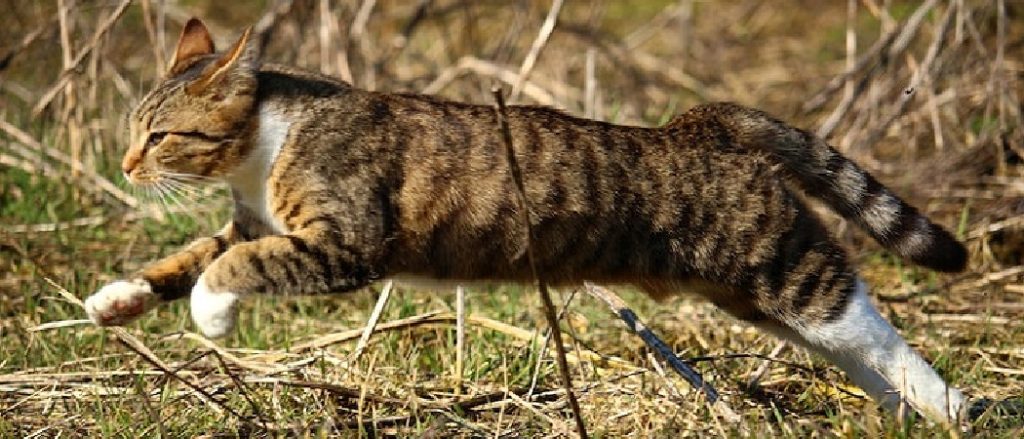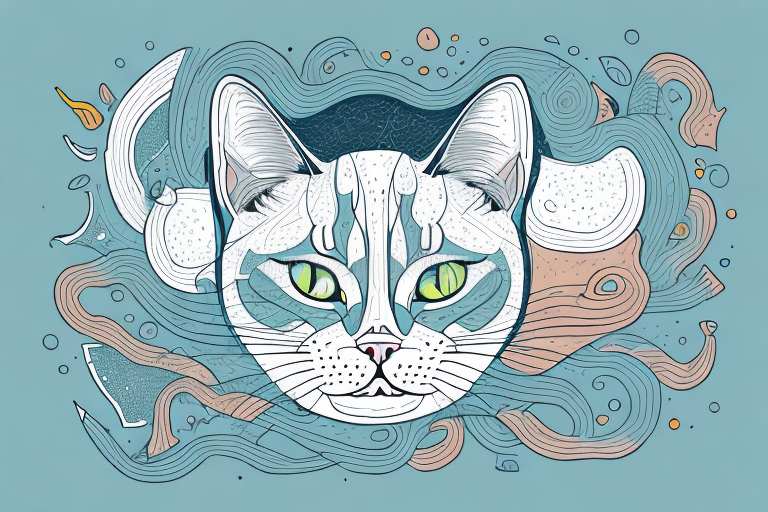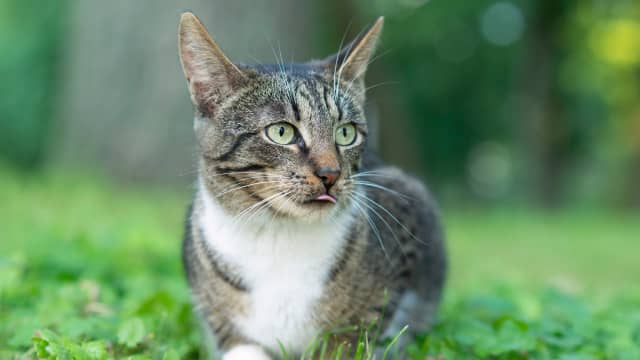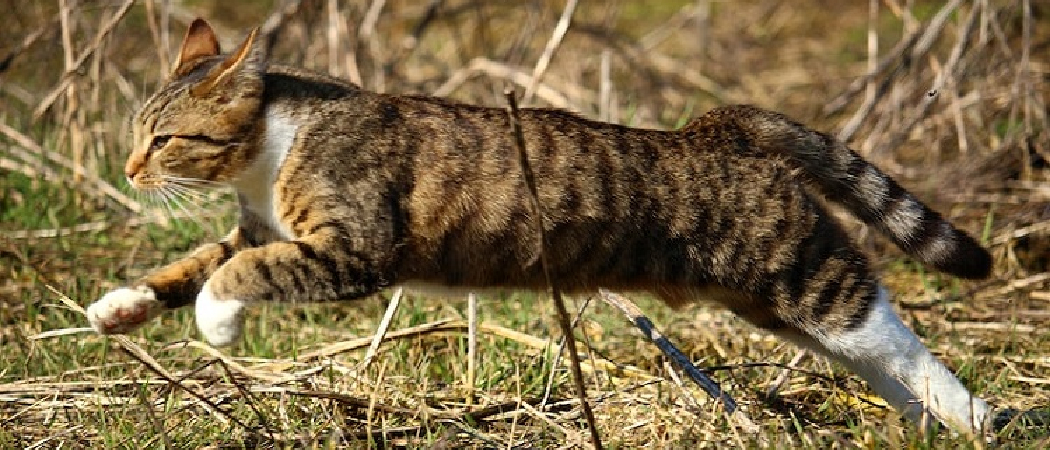Cats drool when they purr due to the combination of relaxation and a release of excess saliva. When cats purr, their bodies go into a state of relaxation, which can cause them to drool.

At the same time, purring stimulates the salivary glands, resulting in an increased production of saliva. This excess saliva often escapes from the cat’s mouth, leading to drooling. This behavior is usually harmless and is a sign that the cat is content and enjoying their current state of relaxation.
Credit: www.quora.com
Understanding Cat Behavior
If you’re a cat owner, you’ve probably noticed that your feline friend occasionally drools when it purrs. This behavior can be puzzling, but understanding the connection between purring and drooling can provide valuable insights into your cat’s behavior and well-being. In this article, we’ll explore the reasons behind why some cats drool when they purr.
The Connection Between Purring And Drooling
When a cat purrs, it typically indicates that they are experiencing contentment and relaxation. Purring is a way for cats to communicate their emotional state, and it is often associated with feelings of pleasure or happiness. However, some cats may also drool while purring, which might seem contradictory as drooling is usually linked to excitement or anticipation.
So, what is the connection between purring and drooling? Well, it turns out that both of these behaviors are controlled by the same part of the cat’s brain – the hypothalamus. This tiny region of the brain regulates various bodily functions, including salivation and vocalization. Therefore, when a cat is in a state of purring-induced relaxation, it can also trigger excessive salivation, leading to drooling.
Possible Reasons For Drooling When Purring
While the connection between purring and drooling is established, it’s worth exploring the various reasons as to why some cats drool when they purr. Here are a few possibilities:
- Blissful relaxation: Cats who drool while purring may simply be experiencing an intense sense of relaxation and happiness. This drooling can be seen as an overflow of their contentment.
- Genetics: Certain cat breeds are more prone to drooling when purring than others. Siamese and Persian cats, for instance, are known to have a higher likelihood of drooling during purring due to specific genetic traits.
- Oral health issues: In some cases, cats may drool while purring as a result of dental or oral health problems. Tooth decay, gum disease, or mouth infections can cause discomfort, leading to excessive salivation.
- Anxiety or illness: Cats under stress, anxiety, or illness might exhibit drooling while purring as a response to their condition. If you notice consistent drooling along with other concerning behaviors, it’s advisable to consult a veterinarian.
Understanding why some cats drool when they purr requires considering a variety of factors, such as relaxation levels, genetic predispositions, oral health, and overall well-being. By observing your cat’s behavior and addressing any potential underlying issues, you can help ensure their comfort and happiness.
1. Understanding Cat Behavior
Cats are mysterious creatures that can often leave us wondering about their behaviors. One common curiosity is why cats sometimes drool when they purr. To understand this phenomenon, it’s essential to delve into their fascinating behavior patterns. Observing their interactions and instincts can shed some light on this peculiar behavior.
1.1 The Connection Between Purring And Drooling
Purring is a unique trait exclusive to our feline friends. It is often associated with relaxation, contentment, and happiness. Cats purr on various occasions, including when being petted, cuddled, or simply when they are comfortable in their environment. However, in some cases, purring may be accompanied by drooling, causing concerned owners to wonder why.
The connection between purring and drooling lies in a cat’s autonomic nervous system. When a cat purrs, their body goes into a state of blissful relaxation. This state can trigger increased salivation, leading to drooling. It’s similar to how humans might salivate when experiencing a particularly enjoyable meal or anticipating food.
1.2 Possible Reasons For Drooling When Purring
While increased salivation during purring is normal, there are a few potential reasons why your cat may be drooling excessively. Understanding these reasons can help provide appropriate care for your furry companion:
One possible reason for excessive drooling when purring is dental issues. Cats can develop dental problems, such as gum disease or tooth decay, which may cause discomfort or pain. In such cases, purring can act as a coping mechanism while the cat’s body produces excess saliva. If you notice your cat drooling excessively or experiencing difficulty eating, it’s essential to consult a veterinarian to address any potential dental issues.
Another reason for drooling when purring in cats can be related to their emotions. Cats may drool when they are feeling extremely relaxed, just as humans may drool while sleeping. This can occur during deep bouts of purring while in a state of profound contentment and relaxation. In most cases, this type of drooling is harmless and nothing to worry about.
In some instances, excessive drooling when purring can indicate an underlying health problem. Certain medical conditions, such as nausea, oral or throat infections, or neurological issues, can cause excessive drooling. If you observe other concerning symptoms along with excessive drooling, such as a change in appetite, weight loss, or behavioral changes, it is crucial to seek veterinary advice for a proper diagnosis.
While drooling when purring may cause concern, it is generally not a cause for immediate worry. By understanding the connection between purring and drooling and being aware of potential issues, you can provide the best possible care for your feline companion. Regular dental check-ups, monitoring your cat’s behavior, and seeking veterinary advice when necessary will ensure your cat’s well-being and your peace of mind.
2. Possible Explanations For Drooling When Purring
Drooling when purring is a common behavior observed in cats and can have several possible explanations. Understanding why cats drool when they purr can provide insights into their emotional state, health, and overall well-being. In this section, we will explore three possible explanations for this behavior: happiness and contentment, overstimulation and excitement, and medical conditions and dental problems.
2.1 Happiness And Contentment
Cats often purr when they are feeling happy and content. This gentle vibration is the feline way of expressing their positive emotions. When a cat is in a state of bliss, it may sometimes accompany purring with drooling. This is usually a sign that the cat is completely relaxed and at ease, finding comfort in their surroundings and enjoying the moment.
2.2 Overstimulation And Excitement
On the other hand, drooling when purring can also be an indication of overstimulation and excitement. Cats can become overwhelmed by excessive petting or attention, leading to a heightened state of arousal. When this happens, their purring may intensify, and drooling can occur as a result of the stimulation overload. It’s important to recognize the signs of overstimulation in cats to ensure their well-being and avoid triggering any negative reactions.
2.3 Medical Conditions And Dental Problems
While drooling during purring is often harmless, it can also be a sign of underlying medical conditions or dental problems. Certain health issues, such as mouth infections or injuries, can cause excessive salivation in cats. Additionally, dental problems such as gum disease or tooth decay can lead to discomfort and drooling. If your cat’s drooling seems excessive or if you notice any other concerning symptoms, it is recommended to consult with a veterinarian to rule out any potential health issues.

Credit: blog.catbandit.com

Credit: pethelpful.com
Frequently Asked Questions For Why Do Cats Drool When They Purr
Is It Normal For Cats To Drool While Purring?
Yes, it is normal for cats to drool while purring. Cats have small salivary glands that can become overactive during purring, causing them to drool. This is usually harmless and nothing to worry about.
Why Does My Cat Drool When Affectionate?
Cats drool when they’re affectionate because it’s a natural response to feeling happy and content. It’s similar to how some human babies drool when they’re comfortable. So, if your cat is drooling when you pet or cuddle them, it’s a sign that they are enjoying the affection you’re giving them.
Do Cats Drool When They Are Happy?
Yes, cats can drool when they are happy. It’s a natural behavior that some cats exhibit as a sign of contentment.
Why Does My Cat Drool When?
Cats drool when they are excited, anxious, or experiencing dental issues. It’s normal for some cats, but excessive drooling may indicate a health problem. Keep an eye on your cat’s behavior and consult a vet if you are concerned about their excessive drooling.
Conclusion
To sum up, cats drool when they purr due to a variety of reasons, including happiness, relaxation, or as a response to certain stimuli. While it may seem peculiar, drooling is a natural and common behavior among cats. Understanding why cats drool can help us better understand and appreciate these fascinating creatures.
So, the next time you see your furry friend purring and drooling, remember that it’s just another way they express their contentment and affection towards you. Happy purring!


